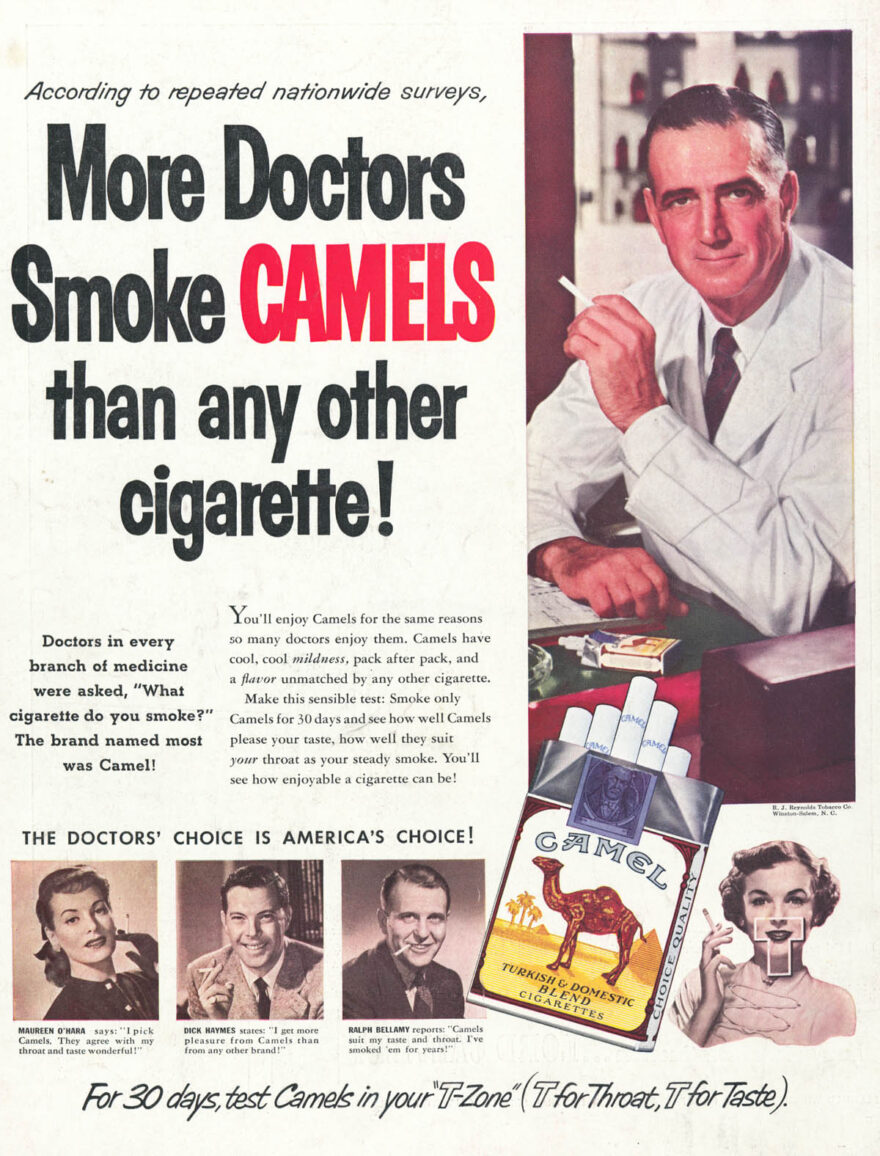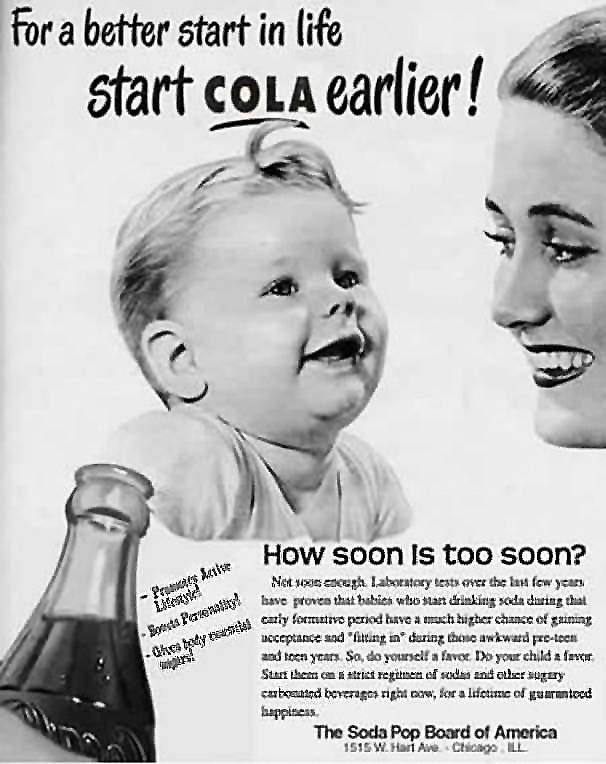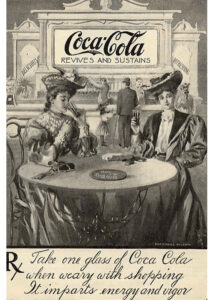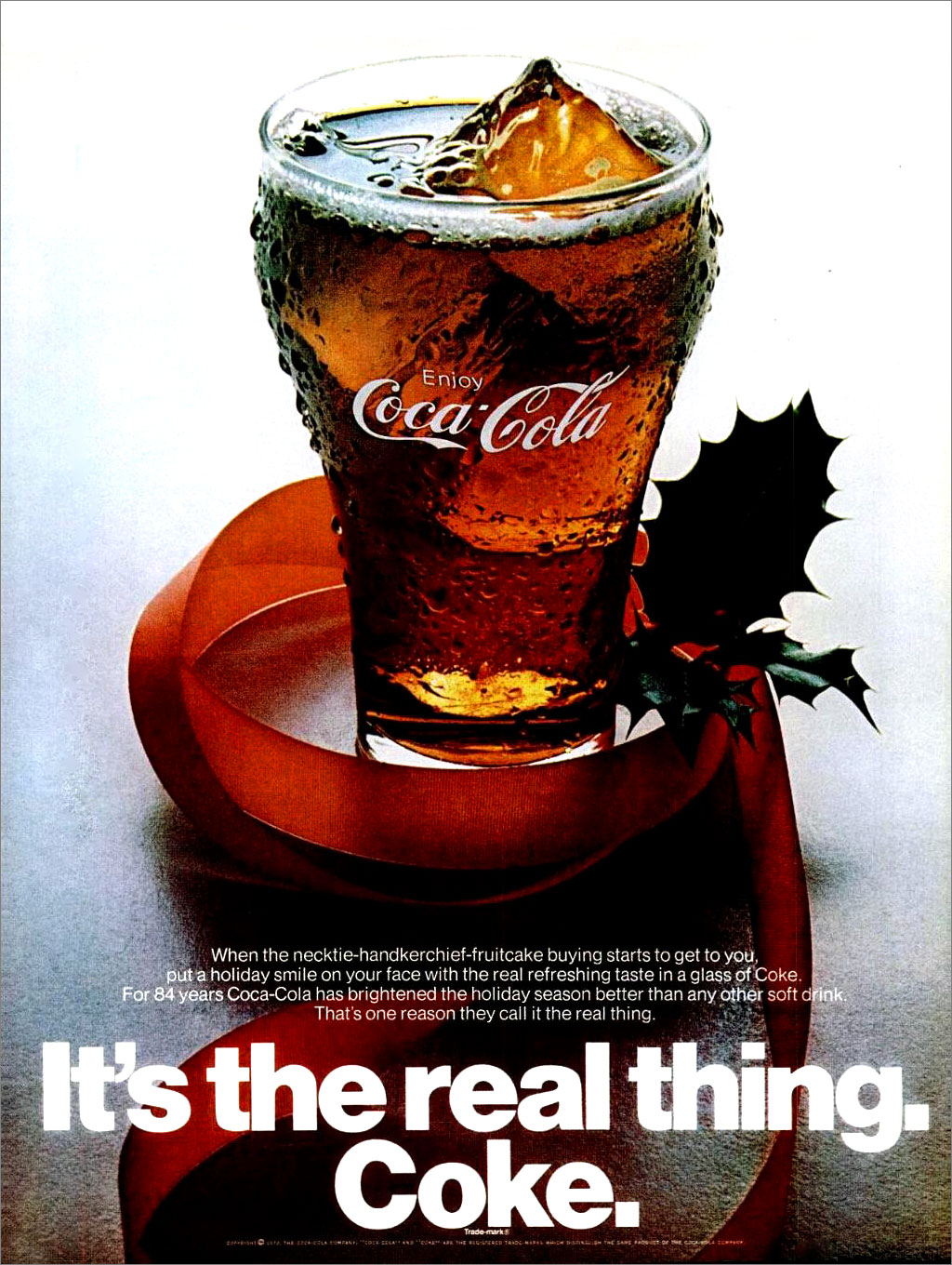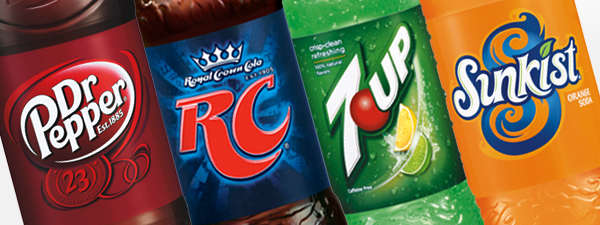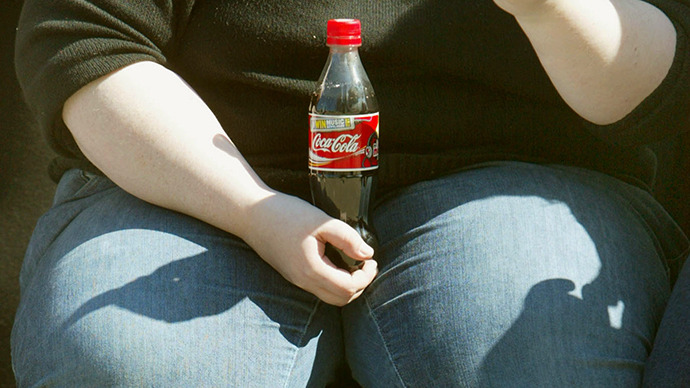Remember the Marlboro Man?
|
|
Now we find out it’s the same lie for soft drinks like Coca-Cola or Pepsi. |
|
Now we find out the truth after 120 years of lies. |
|
The Honest Coca-Cola Obesity Commercial |
|

Why Coke Is a Joke—New Ad Campaign Defends AspartameAugust 28, 2013 https://articles.mercola.com/sites/articles/archive/2013/08/28/soda-aspartame.aspx
|
|
Soda sales are down, and Coca-Cola should be applauding this fact as it is matched by some small improvements with our childhood obesity rates. Instead, they are marketing sodas harder than ever to make up for lost sales.Coca-Cola believes a calorie is just a calorie, and if you consume more than you burn – that’s why you become obese. In other words, their products and marketing to children are not to blame – the problem is that Americans just don’t exercise enough.Now, Coca-Cola Co. has launched another ad campaign—this time to assure consumers that its no- or low-calorie beverages containing the artificial sweetener aspartame are a safe alternative. As reported in the featured article by AdWeek3:
According to the ad, aspartame is a “safe, high-quality alternative to sugar.” Clearly they’ve not reviewed the hundreds of studies on this artificial sweetener demonstrating its harmful effects… Center for Science in the Public Interest’s (CSPI) Executive Director Michael F. Jacobson issued the following statement in response to Coca-Cola’s new ad4:
Sweet Beverages Linked to Skyrocketing Childhood Obesity Rates
Falling for Flawed Calorie-Counting Advice Is a Costly Mistake
Artificial Sweeteners Actually INCREASE Weight Gain
Diet Soda Linked to Same Health Problems as Regular Soda
The Biological Explanation Behind Aspartame’s Harmful Side Effects
Are Your Health Problems Related to Aspartame?
Improve Your Health by Ditching Sweetened Drinks
Tell Coke They’re a Joke! |
|

What Chemicals are Really in Coca-Cola’s Coke Soda?by Christina Sarich October 10th, 2013 https://naturalsociety.com/chemicals-really-in-coca-cola-coke-soda/ Here’s what’s really in Coca-Cola’s famous Coke soda: Carbonated tap water – Whatever is in unfiltered municipal water is also in your Coke. The carbonation that is added increases gastric secretions and can make you flatulent. Here is what your tap water looks like, by the way. E150D – This is a food coloring, which is made from processing sugar at certain temperatures. Ammonium sulfate is then added (also a constituent of Round Up Ready Chemicals used by Monsanto). This chemical has been known to increase asthma attacks. E952 – This is a sugar substitute. It is 200 times sweeter than sugar and can cause your glycemic levels to sky-rocket. This can lead to diabetes, obesity and other diseases. E950 – This is Acesulfame Potassium, and it aggravates the heart, vascular system, and nervous system. It is especially bad for children and pregnant women. E951 – Aspartame – A GMO product which can cause seriously negative impact on your body. Symptoms of aspartame poisoning include: unconsciousness, headaches, fatigue, dizziness, nausea, palpitation, weight gain, irritability, anxiety, memory loss, blurry vision, fainting, joint pains, depression, infertility, hearing loss and more. Aspartame can also provoke the following diseases: brain tumors, MS (Multiple Sclerosis), epilepsy, Graves’ disease, chronic fatigue, Alzheimer’s, diabetes, mental deficiency and tuberculosis. Later, this substance was initially illegal due to its dangers but was again made legal in a suspicious manner. E338 – Orthophosphoric Acid – This causes skin and eye irritation, and can interfere with your body’s ability to absorb calcium, causing osteoporosis. E330 – Citric Acid – This is preservative that is also used in the medical field for preserving blood. In small doses it is fine, but in large doses it can eat away at your stomach and esophageal lining. Aromas – Unknown aromatic additives. E211 – Sodium Benzoate – According to a study completed by Peter Piper at the Sheffield University in Britain, sodium benzoate can harm DNA. Read: Is Diet Soda Bad for You? So would you really want to put this in your body on a daily, weekly, or even monthly basis? The drink is full of chemical toxins that you really don’t need. Consider drinking more purified water and freshly squeezed juices instead. |
High energy snacks and drinks link to bowel cancerBy TOM PETERKIN Published on 14July2013 https://www.scotsman.com/news/high-energy-snacks-and-drinks-link-bowel-cancer-1567865 CONSUMPTION of high- energy snacks and drinks has been linked for the first time to bowel cancer by a group of Scottish scientists.
In a major study that has implications for the notoriously sugar-rich Scottish diet, researchers studied the dietary habits of more than 2,000 patients diagnosed with bowel cancer and compared them to the food and drink intake of a similar-sized healthy population.
The scientists, from Edinburgh and Aberdeen universities, analysed the data and found a statistical association between bowel cancer patients and high consumption of what they described as “high energy snack foods” and “sugar sweetened beverages”.
The high-energy snacks covered a wide range of foods with high fat and sugar content and included crisps, biscuits, cakes, chocolates, nuts and sweets. The sugar-sweetened drinks included both fizzy and fruit drinks.
Official government surveys carried out by the Food Standards Agency have found that the intake of non-diet soft drinks, confectionery, biscuits, cakes and pastries among Scottish children – particularly in older children and those living in more deprived areas – is “considerably higher than recommended”.
Bowel cancer accounts for almost ten per cent of all cancer cases and for eight per cent of all cancer-related deaths. It is the fourth most common cancer in the UK and around 40,700 people in Britain were diagnosed in 2010 – around 110 people every day. Unlike some other cancers, rates for bowel cancer have remained relatively stable for over a decade.
Previous research has shown that there has been a north-south divide in bowel cancer incidence since at least the 1990s. The most recent data shows that the highest incidence rates are still in areas of Scotland, Northern Ireland and the north of England for males. However, a clear divide across the UK is much less evident for females.
The study, which will be published in the European Journal of Cancer Prevention, also factored in known cancer risk factors such as weight, smoking and lifestyle.
Lead author Evropi Theodoratou, of Edinburgh University’s School of Molecular Genetics and Population Health Science, said: “Some of the risk factors were novel, including the intake of ‘high-energy snack foods’ and the consumption of the sugar-sweetened beverages (SSBs). To our knowledge this is the first study to report an association between these factors and colorectal [bowel] cancer. These particular snacks and drinks have not been identified as risk factors for colorectal cancer before.”
She added: “We found that the odds of having colorectal cancer were 18 per cent higher if a diet was high in high energy snacks and sugar sweetened beverages. It is an interesting concept, because these foods are becoming more popular in western diets.”
The link remained significant when other factors such as an individual’s body mass index (a measure of weight in comparison to height) and physical activity were taken into account.
Theodoratou emphasised that although her team had found a link between foods with a high energy density and sugary drinks, there was not enough evidence to prove that they caused bowel cancer.
She said: “These positive associations do not automatically imply causal relationship between these risk factors and colorectal cancer as they can be confounded by other risk factors that we failed to account for. However, they merit further investigation from large studies as they can be very important for public health, especially since their consumption has been reported to be increasing in industrialised countries.”
The study also identified known risk factors for bowel cancer such as a family history of the disease and a high total calorie intake.
It also confirmed that taking a class of medicines called non steroidal anti-inflammatory drugs is associated with a decreased risk of bowel cancer. Commenting on the study, Jessica Harris, senior health information manager for Cancer Research UK, said: “While this study on its own can’t show for sure that these foods are linked to cancer risk, it’s still a good idea to limit the amount of high-sugar and high-calorie foods and drinks in your diet. Having too much of these types of foods can lead you to put on weight, which we know is linked to higher risks of bowel cancer.
“The best ways to reduce the risk of bowel cancer are to cut down on alcohol, get active, eat a balanced diet and aim to keep a healthy weight.”
Professor Mike Lean, chairman of human nutrition at Glasgow University School of Medicine, said: “We can’t yet start saying that this science shows that these foods cause bowel cancer. But we are fairly sure that eating more fruit and vegetables and taking more exercise can prevent cancer.
“It is always useful to have this sort of information. But it may be that part of this is that people who have cancer are inclined to blame the disease on what they eat and on the foods they believe are bad.” |
|

The DARK HISTORY of CIGARETTES and why 32 million Americans are still addicted07March2023 by: Herbal Remedy Insider https://www.naturalnews.com/2023-03-07-the-dark-history-of-cigarettes-americans-are-still-addicted.html This article may contain statements that reflect the opinion of the author (Natural News) (Authored by Content Contributor) For over a century, Big Tobacco has manipulated the American Medical Association, the Food and Drug Administration, and even the Centers for Disease Control, using big money payoffs for thousands of medical doctor endorsements. They covered up and hid the science for over 30 years that smoking causes lung cancer, which they all knew about since the 1930s and 40s.
Then came the early 1960s, when Marlboro (and Kool) commercial cigarette manufacturers figured out they could freebase nicotine using ammonia, making the “hook” of the addiction much stronger, and thus much tougher to quit. They nearly put all the other brands out of business. It was called “ammonia technology” by Philip Morris, and it’s said to deliver up to 100 milligrams of nicotine potency in one cigarette, even though machines that gauge the milligrams only read it as 20 – 30 milligrams. That’s the hook, and it robs millions of people of their health and livelihood, every day. Loading the “Bait” of the Hook: Bleach, Ammonia, Fiber Glass, Plastic, and Hornworm-Killer Pesticide in Commercial CigarettesMore than 32 million Americans smoke cigarettes right now, and more than 16 million are suffering from related diseases and disorders. Cigarettes are a death trap. What most smokers don’t understand is that the nicotine is just relief from the nightmarish cigarette “hangover” that comes from the boatload of chemicals woven into the commercialization, on purpose, to drive repeat business. This deserves careful consideration.
For starters, most cigarettes are white. Paper comes from trees. Trees are brown. That means the paper is bleached, so every puff contains a little bleach. Big deal right? It is a big deal, especially when mixed with ammonia, it becomes deadly, like mustard gas. There’s “the rub.”
Next, the filters contain tiny glass shards, just like fiber glass insulation used in attics, and some of those microscopic fibers escape through the filter, into the smoker’s mouth, throat, and lungs, causing tiny tears repeatedly of the epithelial tissue. Over time, cancer finds this damaged tissue and moves in for the kill. Cigarettes also contain cellulose acetate, a form of plastic, like in photo film, that is woven into the papers so cigarettes burn at 1700 degrees and evenly all the way to the filter. That’s why cigarettes never blow out in heavy wind, and never trail up one side.
Then there are the tobacco pests (meaning worms, not smokers here). Hornworms eat tobacco leaves. They are a major problem for tobacco agriculture, and since cigarette chemicals go unregulated, Big Tobacco (corporate farmers) often use carcinogenic pesticides that penetrate the tobacco leaves, and the smoker ends up inhaling them. Put all that together and you’ve got a chemical concoction that causes anxiety, headaches, sleeplessness, and long-term depression. Free-based nicotine is the “aspirin” of the cigarette hangover, and the vicious cycle goes round and round. Nicotine patch and nicotine gum are scams marketed by Big Tobacco and Big Pharma working together to keep people hookedGuess who manufactures the top selling nicotine patches? Answer: Pfizer, Johnson and Johnson, Merck, and GlaxoSmithKline (GSK). Yes, the nicotine patch and nicotine gum are questionable schemes marketed by Big Tobacco in tandem with Big Pharma. The patch and gum only have a 4% success rate at helping people quit nicotine, and the rest of the customers are customers for life, spending thousands of dollars over the years for “nicotine alternatives” that just keep them hooked on the world’s third most addictive drug, while causing horrific health consequences (hence the connection between Big Tobacco and Big Pharma).
Parent companies of cigarette manufacturers also own firms that manufacture nicotine gum and trans-dermal patches, so they profit from selling cancer sticks AND the drugs that are supposed to “break” the tobacco addiction. You see how that works?
The general public has no idea about this, because the information is kept private. The only way this knowledge “gets out” is when researchers expose corrupt organizations and regulatory agencies like the AMA and their journal JAMA. The tobacco and pharmaceutical companies are simply not required to disclose such ties and major conflicts of interest.
If these “nicotine alternatives” actually worked to help people quit smoking, why would a company that invests in cigarettes also invest in the nicotine patch and gum? These products just switch the nicotine addict from one nicotine delivery device to another. It’s all a scam to keep their “customers for life” (and a shortened, expensive, and miserable quality of life at that). Escape the smoker’s death trap: End nicotine addiction with a natural method that uses functional ingredients backed by scienceThe science behind addiction cravings reveals that smokers suffer from low dopamine levels that get lower and lower with continued use of the free-based nicotine found in commercial cigarettes. Researchers at the Baylor College of Medicine discovered that low dopamine levels are the main reason smokers relapse when trying to quit.
That’s why the best way to remedy the low dopamine situation is to boost dopamine levels naturally. Fortunately, Mother Nature provides an amazing herbal adaptogen called mucuna pruriens that accomplishes this boost, without any addiction or withdrawals, and without that dreaded “crash.”
Smokers across the nation are benefiting from a functional beverage called Krave Kicker that infuses this mucuna superfood extract with vitamin B12, in a proprietary blend that’s delivered in a tasty 2.5 ounce liquid “shot.” Like no other product on earth, Krave Kicker helps beat the nicotine addiction in as little as 4 days. It’s time to wave goodbye to the cigarette death trap once and for all. (Special Note: Content Contributor) This article was authored by Herbal Remedy Insider, a researcher for Krave Kicker, the manufacturer of a functional beverage that contains a natural, herbal remedy for alleviating addiction cravings. This publisher was NOT compensated in any way for carrying this article. It is not a sponsored article, but the author is receiving publicity of this news item in exchange for providing the article at no cost. Research for this article includes: |
|

Licorice Root & Smoking According to the American Lung Association, more cancer-related deaths are attributed to lung cancer in the United States each year than breast, colon or prostate cancer, while about 13 million people are affected by chronic obstructive pulmonary disease, or COPD. What’s even more tragic is that these diseases are largely preventable. The good news is that quitting smoking now may reduce your risk. Certain supplements, such as licorice root, can complement a smoking cessation program. However, ask your doctor if you can safely use licorice root first, since there are several contraindications and drug interactions possible with this herb. BackgroundLicorice is the root of Glycyrrhiza glabra, a type of legume native to Europe and Asia. The flavor of licorice root is due to the presence of an aromatic compound called anethole, which is also found in fennel and anise. However, even though the latter impart a similar taste and aroma as licorice, they are not botanically related. Another compound in licorice root, glycyrrhizin, provides sweetness up to 50 times greater than sugar, which explains why the herb is also known as sweet root.
Traditional UseLicorice root has been used in herbal medicine for centuries to treat a variety of conditions. According to the University of Maryland Medical Center, licorice root is traditionally used as an expectorant and demulcent, which means to expel mucous and soothe irritation, respectively 1. As such, it is commonly used to treat cough associated with upper respiratory disorders, such as asthma and bronchitis. Other applications for licorice root include gastrointestinal complaints, such as acid reflux and peptic ulcers. However, these conditions are treated with a modified extract of the herb called deglycyrrhizinated licorice, or DGL, in which he glycyrrhizin content has been removed.
EffectivenessWhile there is no clinical evidence to support the use of licorice root to stop smoking, anecdotal evidence does exist. However, there are different schools of thought on how licorice helps. The most common theory held by modern herbalists is that licorice root enhances adrenal function because glycyrrhizin has a chemical structure similar to that of corticosteroid hormones produced by the adrenal glands. Smoking puts stress on the adrenal glands to release harmful substances, such as adrenaline, which can have adverse effects on the heart, blood vessels and blood sugar levels. James A. Duke, Ph.D., a herbal expert and former three-pack-a-day smoker, suggests that chewing or sucking on a piece of raw licorice root might help to satisfy the oral cravings many smokers experience 2. In fact, in his book “The Green Pharmacy Herbal Handbook,” he states, “If I were still a smoker, I’d give this one a try. 2”
AvailabilityLicorice root is sold as a dietary supplement. Preparations are available in capsule form and as a tincture and liquid extract standardized to contain 20 percent glycyrrhizinic acid. DGL is available as a liquid extract and chewable tablet. Safety ConsiderationsLicorice root should not be taken longer than six weeks. High doses or long-term use of glycyrrhizinic acid may cause potassium depletion, high blood pressure, edema and pseudoaldosteronism, a condition characterized by sensitivity to adrenal hormones. Do not use licorice root if you are pregnant, nursing, or have a history of diabetes, hypertension or heart, liver or kidney disease. Licorice root may increase the effects of heart and diabetes medications, ACE inhibitors, diuretics and corticosteroids. Consult your health care practitioner before using this herb if you have a chronic condition or are taking other medications.
|



